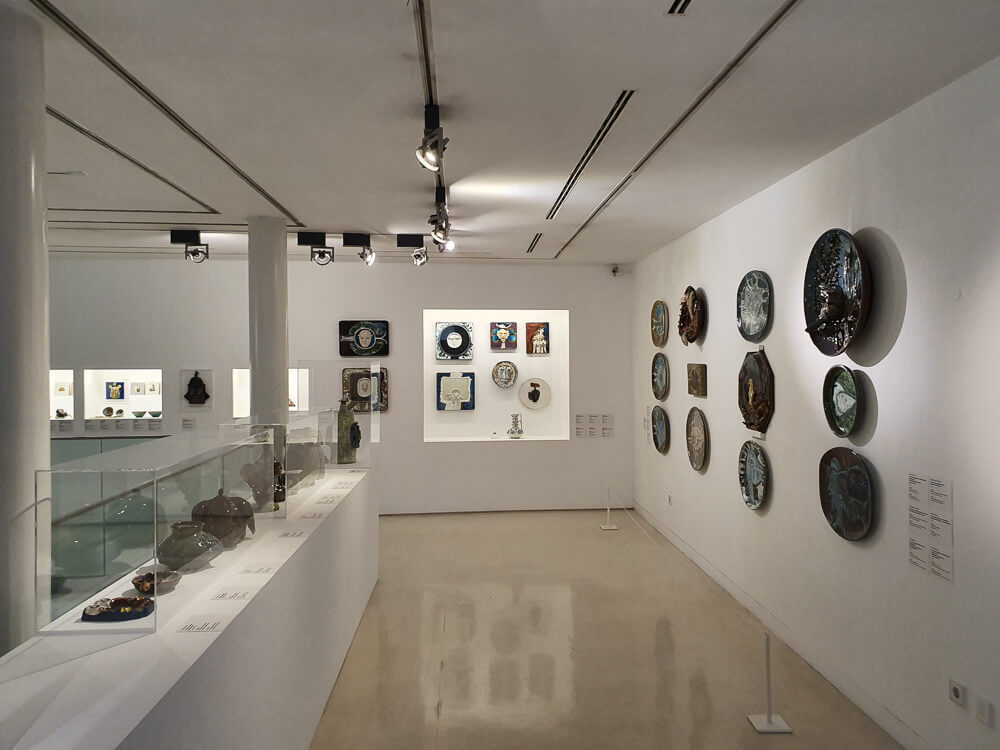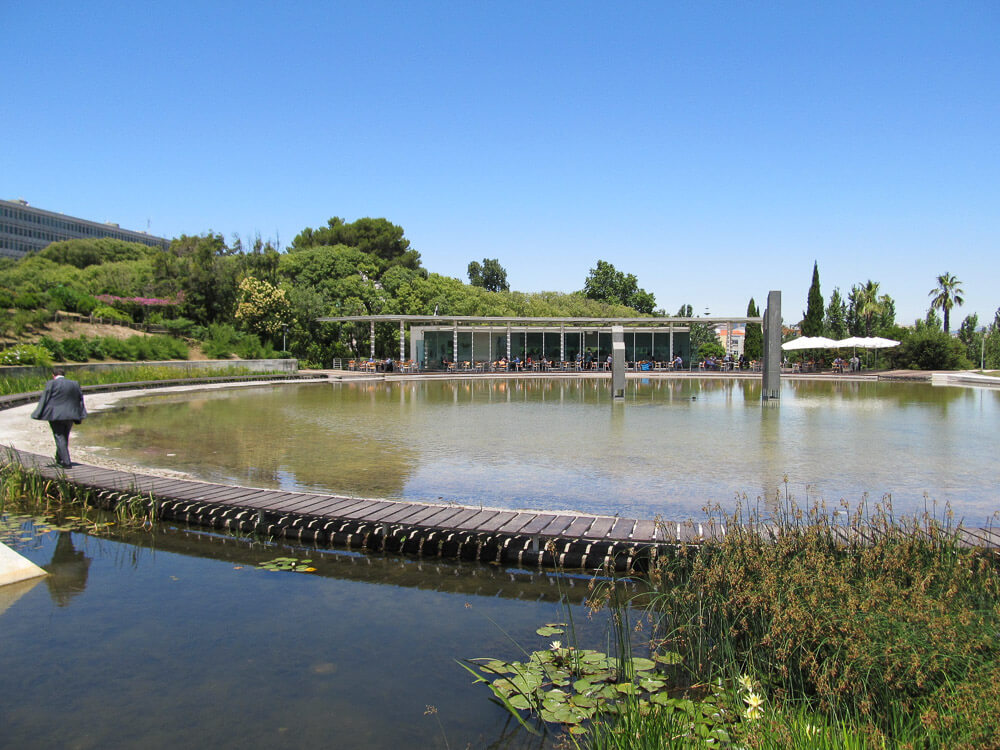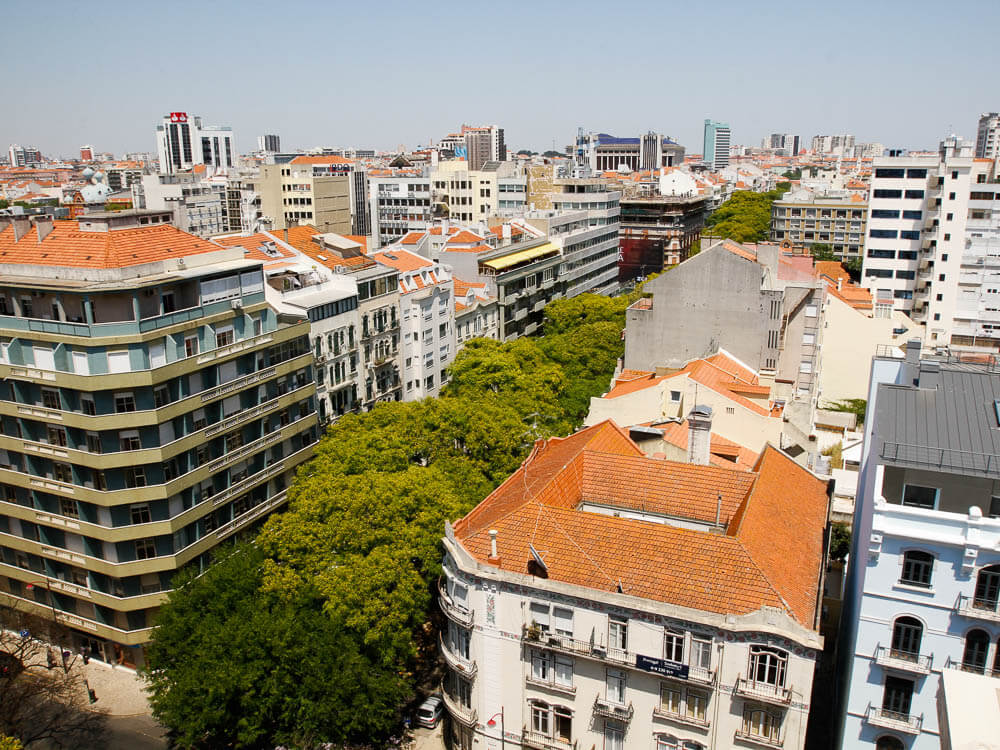Even though Lisbon is considered a historical city, it also has some more modern districts, such as Avenidas Novas. This neighborhood dates back to the late 19th century, and is characterized by wide tree-lined avenues, elegant architecture, and spacious squares.
The Avenidas Novas is a prime example of modern urban planning, reflecting Portugal’s architectural evolution. It may not have as many tourist attractions as other areas, but it’s still very much worth a visit, especially if you want to see a different side of Lisbon.
In this guide, I’ll take you through some of its highlights, as well as its history, how to get there and where to stay. Ready? Let’s go!
Index
- Highlights of Avenidas Novas
- Architecture and infrastructure
- Educational facilities in Avenidas Novas
- Expat Community in Avenidas Novas
- How to get to Avenidas Novas?
- Where to stay in Avenidas Novas?
- History of Avenidas Novas

1. Highlights of Avenidas Novas
Although Avenidas Novas is a predominantly residential and commercial area, there are a lot of things you can do both in the district itself and in the area surrounding it. Here are my main recommendations:
1.1. Calouste Gulbenkian Museum

The Calouste Gulbenkian Museum is one of the top attractions in Avenidas Novas. With its carefully curated and engaging displays, the Calouste Gulbenkian Museum is an essential part of Lisbon’s artistic and cultural scene, and a must-visit for anyone interested in art.
The museum houses a varied collection from its founder, Calouste Gulbenkian, which includes works from Egypt, Greece, Asia, and select pieces from St. Petersburg’s Hermitage Museum.
It also has a modern art collection, which is displayed in another building within the same grounds. After visiting the exhibitions, you can enjoy the gardens surrounding the museum, where you’ll find beautiful outdoor sculptures and enjoy a serene setting ideal to take a stroll or relax by the lake.
1.2. Fonte Luminosa

Fonte Luminosa, or “The Illuminated Fountain”, is a notable landmark in Lisbon’s Avenidas Novas district. Constructed in the 1940s during a period of urban expansion, the fountain serves not only as an ornamental feature but also highlights the significance of water in Portugal.
Each evening, Fonte Luminosa offers a light show that brightens its waters with various colors and water jets that create different patterns, which draws a lot of visitors, especially at nighttime.
Positioned at Alameda Dom Afonso Henriques, there are terraces that overlook the fountain and provide panoramic views of the Avenidas Novas area, allowing visitors to admire both the fountain and surrounding Lisbon landmarks.
1.3. Pimenta Palace (Museu de Lisboa)

Pimenta Palace, dating back to the 18th century, serves as the primary location of the Lisbon Museum, offering a comprehensive collection documenting the city’s history from ancient times to the present day.
The exhibits cover various periods including Roman, Visigothic, and Moorish rule, providing visitors with insights into Lisbon’s diverse past. Notable features include a well-preserved kitchen area that showcases historical domestic practices, and a scale model depicting Lisbon’s pre-1755 earthquake urban layout.
Additionally, the palace grounds feature formal gardens, where you’ll find peacocks and ceramic figures by Portuguese artist Rafael Bordalo Pinheiro, adding an artistic touch to the outdoor space.
1.4. Campo Pequeno Arena

Campo Pequeno Arena, located in Lisbon’s Avenidas Novas district, dates back to 1892 and stands out for its Moorish Revival architecture, with its red brickwork and domes with arches. It serves as the primary venue for Portuguese-style bullfighting, typically held on Thursdays from Easter through October.
This form of bullfighting includes horsemen (cavaleiros), footmen (bandarilheiros), and forcados, who confront bulls without weapons. While bulls are not killed during these events, there is ongoing debate surrounding this tradition, especially from animal rights advocates.
Beneath the arena lies a contemporary shopping area with various stores, dining options and a cinema. Besides that, Campo Pequeno also houses a museum dedicated to the history of bullfighting in Portugal.
1.5. Anastácio Gonçalves Museum

The Anastácio Gonçalves Museum stands out as one of the few preserved historical buildings in the Avenidas Novas district. It was once the residence of Portuguese art collector Dr. Anastácio Gonçalves, and is a well-maintained example of 19th-century residential architecture.
There, you’ll be able to explore 19th-century Portuguese paintings, alongside Chinese porcelain, which reflects the country’s past trade connections with Asia, and European furniture with the diverse styles that influenced Portuguese home decor during that period.
If you’re interested in art and culture, you should definitely pay this museum a visit!
1.6. Igreja de São Sebastião da Pedreira

The Igreja de São Sebastião da Pedreira was built in 1652 and stands as a significant church in the Avenidas Novas district.
Having survived the 1755 earthquake, which damaged large parts of the city, it remains a fantastic example of Portuguese Baroque architecture. Inside, you’ll find azulejos depicting religious scenes and gilded elements that reflect Portugal’s historical artistic heritage.
Despite modernisation and changes in its surroundings, the church maintains its cultural significance in modern Lisbon, and is still an impressive site even though it’s smaller in scale than other churches in the city.
1.7. Bordalo Pinheiro Museum

The Bordalo Pinheiro Museum, located in an early 20th century mansion in Avenidas Novas, focuses on preserving and presenting the work of Rafael Bordalo Pinheiro. This multifaceted artist was a journalist, caricaturist, potter and painter, whose works often criticize social and political aspects of Portugal in the late 1800s.
He was known for using animals and plants as symbols as a critic of society. His most well-known character is Zé Povinho, who represented the average Portuguese person and their challenges with societal issues such as corruption.
The museum’s collection contains drawings, paintings, ceramics, and I highly recommend visiting the Bordalo Pinheiro collection, especially if you’re interested in art that contains social commentary.
1.8. Green areas

Another great thing about Avenidas Novas is that it has a lot of green spaces, offering residents and tourists a place to relax in the middle of the city. It’s really amazing to see how this district manages to be so modern without losing touch with nature!
Some of the best gardens and parks include Jardim do Arco do Cego, Jardim do Campo Pequeno, Jardim Cesário Verde and Jardim Amália Rodrigues, all of which offer quiet spots with a varied plant life that only adds to their charm.
Another notable green area is Parque Eduardo VII, a very popular spot where locals usually walk with their dogs, have picnics and do other day-to-day activities. That’s also where you’ll find the Estufa Fria, a three-part indoor greenhouse that features a great range of plants.
2. Architecture and Infrastructure
Avenidas Novas is known for its clean urban design, with straight avenues that support traffic and walking, creating an orderly and accessible environment. Some of the main streets are Avenida da República and Avenida Fontes Pereira de Melo, which are lined with large squares that contribute to the area’s openness.
As you walk through Avenidas Novas, you’ll observe various architectural styles that reflect its historical growth. There are Art Nouveau buildings standing near Art Deco ones, as well as Modernist and Contemporary structures. The facades from the early 20th century are particularly notable for their detail, adding a distinct charm to the district.
The green spaces are also an important part of Avenidas Novas, as they create a balance between contemporary and natural. In addition to the gardens and parks, there are also plenty of health services there.
The Curry Cabral Hospital, for example, stands out as a key medical facility within this district, operating alongside several smaller centers that provide local citizens easy access to health care.
3. Educational facilities in Avenidas Novas

Besides serving as a business center and residential area, Avenidas Novas is also home to great education institutions. Some of them are the Banking Training Institute and the Institute of Banking Management, which provide specialized education in finance and management.
The Nova University of Lisbon is another important institution within Avenidas Novas, comprising 18 faculties with diverse undergraduate, master’s, and doctoral programs that attract lots of international students.
The university’s historic buildings were designed by architects Porfírio Pardal Monteiro and António Pardal Monteiro between 1938 and 1961. Visitors can explore features like the Rectorate Building, featuring art panels by Almada Negreiros and stained glass works by Lino António.
Oh, and it’s highly likely that you’ll spot students wearing traditional Academic Costumes, which only adds to the university’s charm and character.
For families considering moving to Avenidas Novas, you should know that there are plenty of reputable educational options, from primary to superior levels. So, if you have the opportunity, it’s a great place to both live and study in Portugal!
4. Expat Community in Avenidas Novas
Avenidas Novas may be a predominantly commercial district, but there are also housing options, especially for wealthier residents. Many expatriates, for example, are attracted to this area due to its combination of city amenities and quality living spaces.
There are lots of coworking spaces available to support the community of international professionals and business owners, as well as modern facilities and cultural activities that are often mentioned as reasons for moving there.
The interest in Avenidas Novas has grown in recent years thanks to Portugal’s Non-Habitual Resident (NHR) tax benefits program, which provides tax reductions for foreign residents. This makes it appealing for retirees and remote workers aiming to improve their financial standing while living in Lisbon.
There are many citizens from France, Sweden, Belgium, Germany in Avenidas Novas, and non-EU citizens have the option to gain residency in Portugal through the Golden Visa program by investing in real estate. This not only supports the property market, but also adds diversity to the neighborhood.
5. How to get to Avenidas Novas?
Avenidas Novas has a very central location, which means it’s very easy to get there. Parts of the neighborhood can be reached on foot from Lisbon’s historic center, and visitors can walk from Avenidas Novas to explore nearby areas and landmarks.
Besides that, the district is well-connected by public transportation, served by all four of Lisbon’s metro lines. The yellow line connects Avenidas Novas to important locations such as Campo Pequeno and Saldanha, making it a practical starting point for exploring the city.
As for bus services, you can reach Avenidas Novas by taking route 736 from Cais do Sodré station. An easy and budget-friendly option!
6. Where to stay in Avenidas Novas?
If you want to stay in the Avenidas Novas area, there are plenty of hotel options. Both local and international chains are present, and, although these hotels may not have the historical charm of other city areas, they offer modern and comfortable rooms. Here are my main recommendations:
- Real Palácio: this 5-star hotel is located near Parque Eduardo VII. Guests can enjoy amenities like a sauna, hot tub and a gym, as well as rooms with free WiFi, air conditioning, and minibars. The hotel serves a breakfast buffet and features an à la carte restaurant and bar that offers regional dishes.
- H10 Duque de Loulé: this hotel combines comfort with practicality, offerinng restaurant service, complimentary WiFi throughout the property, air-conditioned rooms with coffee machines, hair dryers and free toiletries. Its 24-hour front desk staff are always available to assist guests, while the terrace gives guests an area to unwind. The location is convenient too, just a short walk from Liberty Avenue .
- VIP Executive Picoas Hotel: this 4-star hotel provides room service around-the-clock, comprehensive WiFi coverage, a business center and concierge services. It caters well to both corporate visitors and leisure travelers. Positioned close to Rossio Square, this hotel ensures easy access to cultural experiences during your stay in Avenidas Novas.
7. History of Avenidas Novas

Avenidas Novas was developed in the late 19th century during Lisbon’s urban restructuring, influenced by architectural innovations seen in Paris. It’s one of the city’s most upscale residential neighborhoods and an important business area, very well-served by services and public transport.
The district’s development involved expanding roads to improve traffic flow, adding open spaces and planting trees along its avenues, which contribute to both its looks and environmental quality, making it a comfortable place to live.
Located next to traditional upper-middle-class neighborhoods like Campo de Ourique and Estrela, Avenidas Novas is near Marquês de Pombal Square and includes major avenues such as Avenida da República and Avenida Fontes Pereira de Melo.
Ready to be enchanted by Lisbon’s newer neighborhood?

Avenidas Novas is one of the newest and most upscale Lisbon districts, known for its wide tree-lined avenues and modern buildings. It’s also a center for business activities, cultural events, and leisure, with plenty of restaurants, parks, gardens, art galleries and theaters that attract both locals and tourists.
For those of you who want to see a different side of Lisbon, Avenidas Novas is a great place to visit. It provides a slice of contemporary life in Portugal while remaining close to more historic areas, and that’s what makes it so enticing!
Whether you’re just visiting or looking for a place to live, this is definitely a place I’d recommend getting to know. Avenidas Novas is a well-rounded neighborhood that provides an urban environment with lots of convenient services and an unmatched energy that will surely captivate you!







